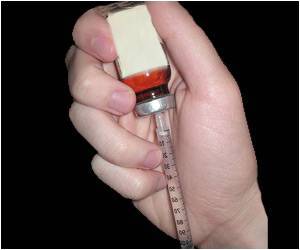Epilepsy is a spectrum condition with a wide range of seizure types and control varying from person-to-person.

‘Having seizures and epilepsy can affect one's safety, relationships, work, driving and so much more. Public perception and treatment of people with epilepsy are often bigger problems than actual seizures.’





"With so many medications and so little data," Dr. Gaillard says, "one might think doctors would choose a wider variety of medicines when they prescribe to children with epilepsy." However, the results from a recent study by Dr. Gaillard and colleagues, published online in Pediatric Neurology on June 27, 2017, show otherwise. The study indicates that doctors in the United States appear to have reached an unexpected consensus about which medication to prescribe for their pediatric patients.
The study is part of a broader effort to collect data on the youngest epilepsy patients -- those younger than 3 years old, the age at which epilepsy most often becomes evident. As part of this endeavor, researchers from 17 U.S. pediatric epilepsy centers enrolled in the study 495 children younger than 36 months old who had been newly diagnosed with non-syndromic epilepsy (a condition not linked to any of the commonly recognized genetic epilepsy syndromes).
The researchers mined these patients' electronic medical records for information about their demographics, disease and treatments. About half of the study participants were younger than 1 year old when they were diagnosed with epilepsy. About half had disease marked by focal features, meaning that their epilepsy appeared to originate from a particular place in the brain. Nearly all were treated with a single medication, as opposed to a cocktail of multiple medicines.
Of those treated with a single medication, nearly all were treated with one of five medicines: Levetiracetam, oxcarbazepine, phenobarbital, topiramate and zonisamide. However, the data showed a clear prescribing preference. About 63 percent of the patients were prescribed levetiracetam as a first choice. By contrast, oxcarbazepine and phenobarbital, the next most frequently prescribed medicines, were taken by patients as a first choice by a mere 14 percent and 13 percent respectively.
Advertisement
It's not clear why levetiracetam is such a frequent choice in the United States, says Dr. Gaillard. However, in its favor, the drug is available in a liquid formulation, causes no ill effects medically and can be started intravenously if necessary. Studies have shown that it appears to be effective in controlling seizures in about 40 percent of infants.
Advertisement
What's really necessary, Dr. Gaillard says, is real data on efficacy for each of the medications commonly prescribed to pediatric epilepsy patients--a marked vacuum in research that prevents doctors from using evidence-based reasoning when making medication choices.
"This study identifies current practices, but whether those practices are correct is a separate question," he explains. "Just because a medication is used commonly doesn't mean it is the best medication we should be using."
To answer that question, he says, researchers will need to perform a head-to-head clinical trial comparing the top available epilepsy medications in children. This study sets the stage for such a trial by identifying which medications should be included.
"Uncontrolled pediatric epilepsy can have serious consequences, from potential problems in development to a higher risk of death," Dr. Gaillard says. "You want to use the optimal medicine to treat the disease."
Source-Eurekalert










